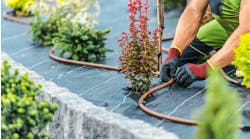Did you know we have a disease named in our honor? Several years ago, we were playing one of those trivia games and I got the question, “What disease is named for plumbers?”
It threw me for a loop. Man, if you ever feel a need to realize just how uneducated you really are, play one of those games!
Plumbism is the answer, aptly named after our brethren of old — or should I say sistren, since a large number of the ancient Roman plumbers were female? It’s lead poisoning, of course, and is still considered to be one of our nation’s leading problems.
Lead poisoning causes damage to the nervous system, kidneys, intestinal tract, immune system and contributes to learning disabilities. It can result in diminished intelligence, anemia, premature birth or abortion, loss of hearing, hyperactivity, short attention span, loss of appetite, diarrhea, convulsions, coma, irritability, stunted growth and even death.
High levels of lead poisoning can also damage the male reproductive system. Paint chips get most of the media attention as the culprit for lead poisoning, but, as you might expect, that’s not what I’d like to discuss in this article.
Lead, as you know, is a naturally occurring bluish-gray metal, which has no characteristic taste or smell. It possesses qualities of high density, ease of casting, low melting point, low strength, easy-to-work with for fabrication, resistance to acids and electrochemical reaction to sulfuric acid so we can start our trucks on cold mornings.
In our trades it has traditionally been used by itself or as alloys in products such as 50/50 solder, which was banned from use in June 1988 for use with potable water distribution piping. This was followed in 1989 with regulations on lead content in drinking-water coolers in schools. Leaded gasoline was banned on Dec. 31, 1995.
In 1993, the EPA reported known releases (only those in excess of 1 lb. are reported) to our environment of 4.06 million lb. of lead! Of those releases, 695,894 lb. were into our air, 24,575 lb. in surface water discharges and 3.34 million released to our land — a staggering disgrace.
Remember working with the 4-lb. sheet-lead drain pans for showers? I love vinyl. If you’re old enough, you will be able to recall lead drain-line installations and making wipe-joints with molten wiping solder. You only made the mistake of wearing a ring once, and a barrel of lamb’s tallow was in our shop for application prior to wiping joints. I have a lead pig of wiping solder serving as a paperweight on my desk.
As an apprentice, I spent many an hour melting down the lead drain lines that we had removed during re-rough jobs and pouring pigs for later use. For you kids, this was before rubber gasket joints, Fernco and no-hub couplings were in use. We used this recycled lead for cast-iron bell-and-spigot joints.
One thing I found out the hard way — a wet lead ladle (it had been on the back of the truck in the rain) and a pot full of molten lead don’t mix well. Boom! By dumb luck, the cup of the ladle was facing away from me and all that was hurt was my pride. Cleaning up the 50 lb. of lead that flew around the shop was another story.
Water can be classified into two basic groups, surface and underground. About 75% of the earth’s surface is covered with water. Less than 1% of this “surface” water is available for our consumption. As much as 96% of the world’s available fresh water reserves are stored in “underground” aquifers. Only 3% of all the water in the planet is fresh water. Of that 3%, three-quarters of it is frozen; only one-half of 1% of all water is underground; 1/50th of 1% of all water is found in lakes and streams; and you are about 70% water. You can normally survive for five days or less without water! So, without plumbers and the potable water we bring, everyone has just five days to live.
Water is also classified as a solvent. Lead can be leached out of bronze (a combination of copper and lead) as well as from lead-based solder joints by aggressive water. Prior to the 1998 ban of lead-based solders and progressive changes within the faucet- manufacturing industries, most plumbing within our customers’ homes was installed with those products. When you pause to contemplate the public reaction to the lead scare of that era and then think about the mass hysteria of the recent Y2K hype, I shudder to think how we as a trade would have fared in today’s environment.
Not far from where I grew up and now reside, there is an old landfill that eventually ended up on the government’s Superfund cleanup list. When we were kids, this was a favorite haunt, with roads winding through mountains of discarded appliances, household junk and industrial waste. In short, it was paradise — a place to peek and probe into society’s cast-a-way treasures. When it became too full for continued use, it was simply covered over and forgotten. Many years later, urban sprawl caught up with this area and several nearby developments sprang up. The homes were of the high-end variety and all had one thing in common: well water was their sole source for drinking and bathing.
I’ll continue this next month.

